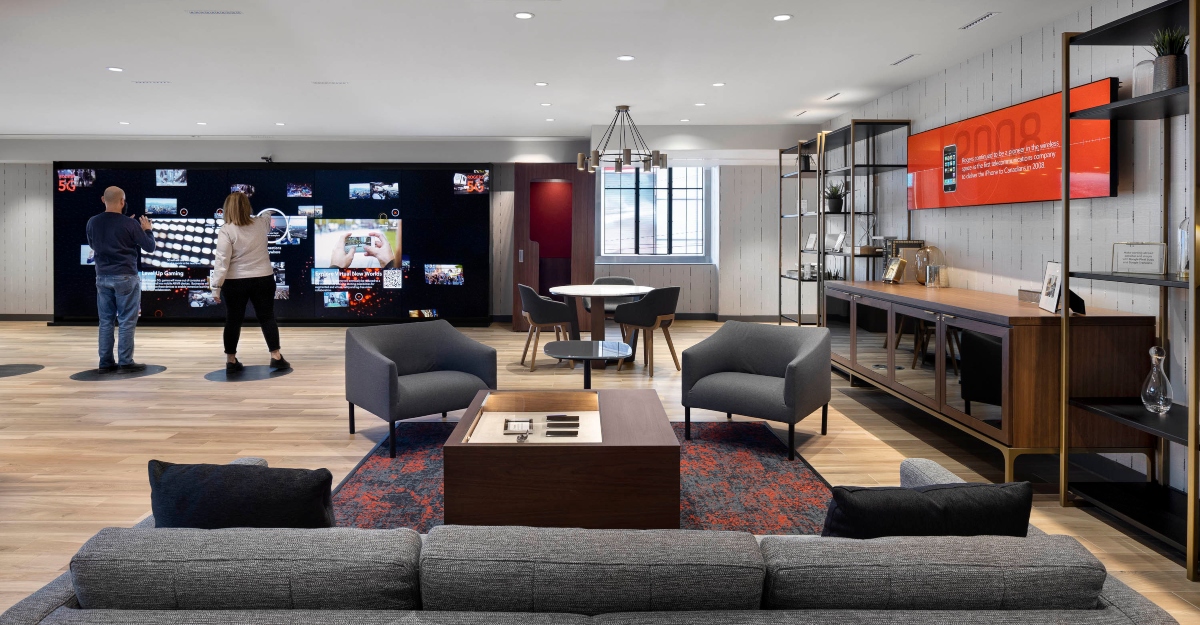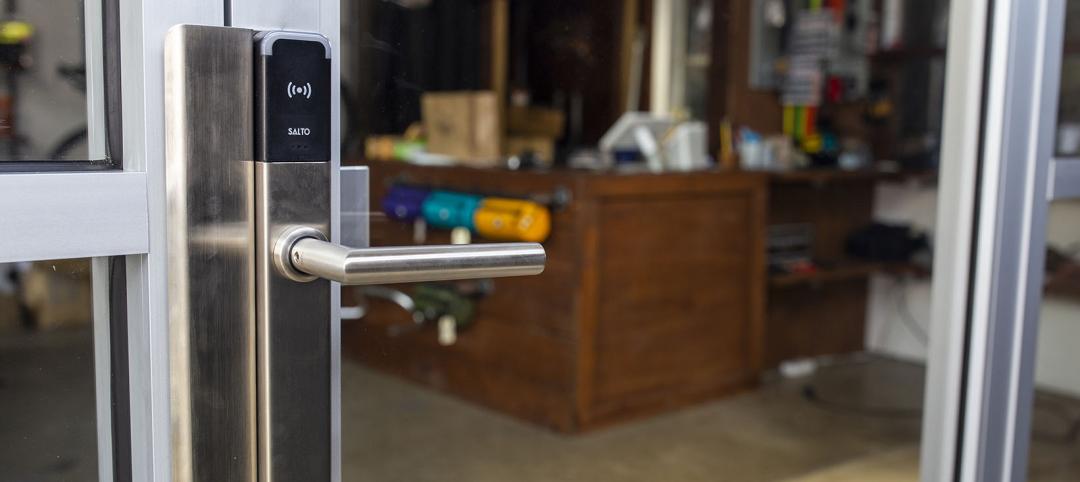Brick-and-mortar retailers, already gasping for air under pressure from ecommerce, were dealt a critical blow by the spread of the coronavirus that forced most stores and restaurants to close, or at best operate as carryout- or delivery-only providers.
The fallout has not been pretty. The website Retail Dive, which keeps a running tab on retail bankruptcies, reported that, as of June 30, 15 major retailers had either closed their doors for good or filed for protection from their creditors to prevent that. This year’s list didn’t include Microsoft, which announced it would close all but four of its 83 physical stores.
Nor did it track the casualties in the restaurant and supermarket sectors, which include the January Chapter 11 filings by Lucky’s Market and Bar Louie; the February filing by Earth Fare; FoodFirst Global Restaurants, which filed in April; Garden Fresh Restaurants, which closed its locations permanently in May; or CEC Entertainment, the parent of the Chuck E. Cheese and Peter Piper Pizza franchises, which filed on June 25.
In June, the website MoneyWise recounted several of America’s best-known brands—among them Subway, Starbucks, Pizza Hut, Burger King, Steak ‘n Shake, Boston Market, and Applebee’s—that had announced plans to close what aggregately amounts to thousands of outlets.
Yet, retail stores have continued to open during the pandemic; several, ironically, by online retailers (bit.ly/2Bxq81V).
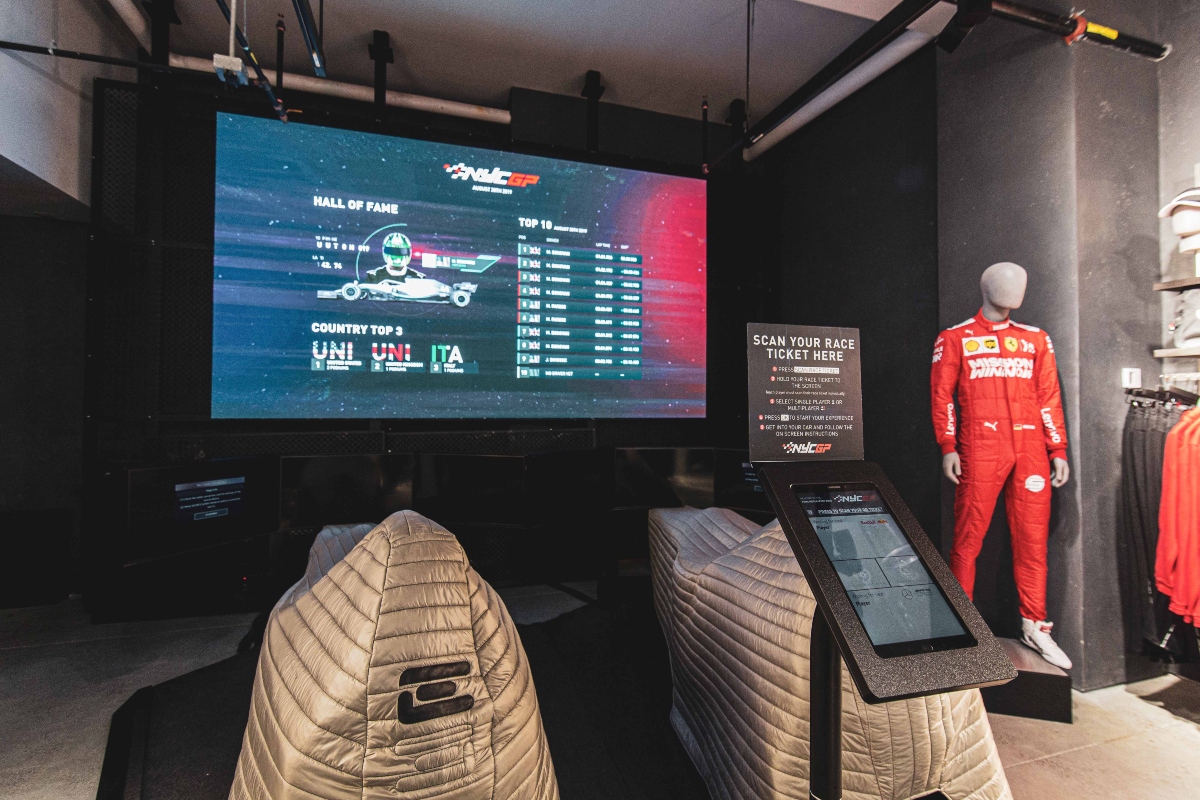
Puma’s flagship store in New York City offers a customer experience supported by technology enabled engagement areas that include simulators for F1 racing and soccer coaching. Photo: Joe Reed, courtesy Shawmut
And while retail and foodservice are undoubtedly undergoing major changes, owners are still considering construction, renovation, and adaptive reuse projects. In June, the Dion’s pizza chain opened a 4,500-sf store, its 20th, in the Roswell Pavilion shopping mall in Albuquerque, N.M. That same month, it was reported that Lowe’s Home Improvement Centers was planning to reopen a store in Meriden, Conn., which the company had closed 11 years ago, as a discount appliance outlet (bit.ly/3ghSmN1).
Any plans for new construction and renovation need to understand how customers will want to shop in the future. Answers to that question, say AEC retail experts, start with social distancing that some believe will have a long-lasting effect on this sector.
“People will still want to protect themselves,” say Michelle Ray, AIA, LEED AP BD+C, Principal and Mixed-Use Specialist; and John Tran, AIA, NCARB, LEED AP, Vice President and Design Principal, both in SmithGroup’s Phoenix office. “They expect stores to do the same.”
For restaurants, that will mean staggering reservations to control dining room densities, says Nancy J. Ruddy, CetraRuddy’s Founding Principal and Director of Interior Design. Technology will come into play, she adds, by offering patrons a menu-free touchless experience facilitated via their smartphones. “These devices are our safe space,” says David Cassidy, AIA, NCARB, CallisonRTKL’s Senior Vice President and Retail Practice Area Lead.
“Retail brands will have a renewed focus on technological integration, driving for omnichannel experiences to be seamless as possible, so customers can easily transition between in-store and online,” adds Jim Scarpone, Director–Retail for Shawmut Design and Construction.
An equally important priority, says Scarpone, will be the health and wellness of customers and employees. That is already leading to greater use of materials that absorb less and are easier to clean, and a stricter enforcement of cleaning and sanitary protocols. SmithGroup’s principals note, for example, that retailers like Macy’s and Nordstrom have already closed their fitting rooms and quarantine clothing that’s been tried on.
Retail owners lean on technology
The virus was spreading at a time when retailers were reevaluating their store sizes and types. CRTKL’s Cassidy notes that dealers can now operate successfully with smaller stores in fewer locations by “complementing” their brick-and-mortar presence with less-expensive warehouse space that’s strategically positioned for logistics, and by integrating their online sales.
However, smaller eateries and bars could be at a disadvantage, say SmithGroup’s principals. “Restaurants are likely to look half empty and be quieter for a long time, without the energy of dining rooms bursting at the seams. Many smaller local restaurants and bars will not survive,” which could open new doors for adaptive reuse, they suggest.
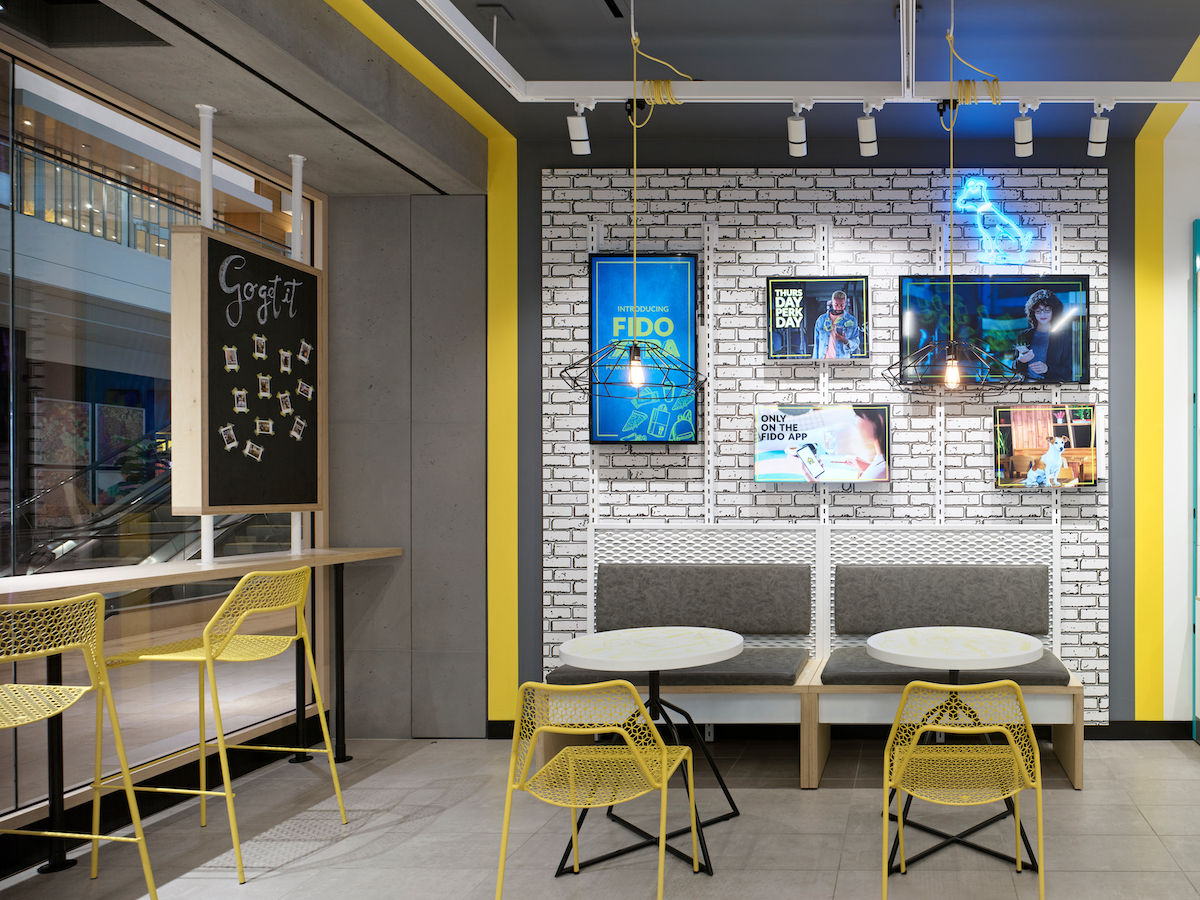
CRTKL also worked with Fido, a Rogers-owned cellphone service provider, on a store redesign that moves away from the strictly transactional to a more relaxed environment that encourages conversation between staff and customers. Photo: Ben Rahn/A-Frame, courtesy CallisonRTKL
The coronavirus is providing owners and property managers with valuable lessons. Retailers and restauranteurs found that carryout and delivery can expand their customer bases. To that end, SmithGroup has seen the emergence of “ghost kitchens” that several restaurants share and are designed to fulfill takeout and delivery services, thereby reducing the financial burden on business owners and creating a safer environment for workers and diners.
Ruddy points out that restaurants which reopened initially with outdoor dining are now incorporating that into their operations to add some excitement and newness to the dining experience. The goal, she and other AEC sources say, is to capitalize on pent-up demand and motivate customers to return to stores and restaurants.
3 ways retailers are transforming shopping experience
• Technology enhanced interaction: Shawmut built out Puma’s flagship store on Fifth Avenue in New York City. The customer experience is supported by cutting-edge technology in innovative engagement areas that include an F1 racing simulator, virtual soccer coaching in a “skill cube” simulator, and virtual bleacher seating in the NBA2k gaming experience zone.
CallisonRTKL designed Canada’s first 5G-ready store with Rogers 302: a 9,000-sf technology retail hub that includes an event space for immersive, digitally facilitated experiences such as celebrity singing holograms, virtual DJs, and interactive projections.
ALSO SEE: ‘Cargotecture’ is coming to North Carolina’s Research Triangle Park
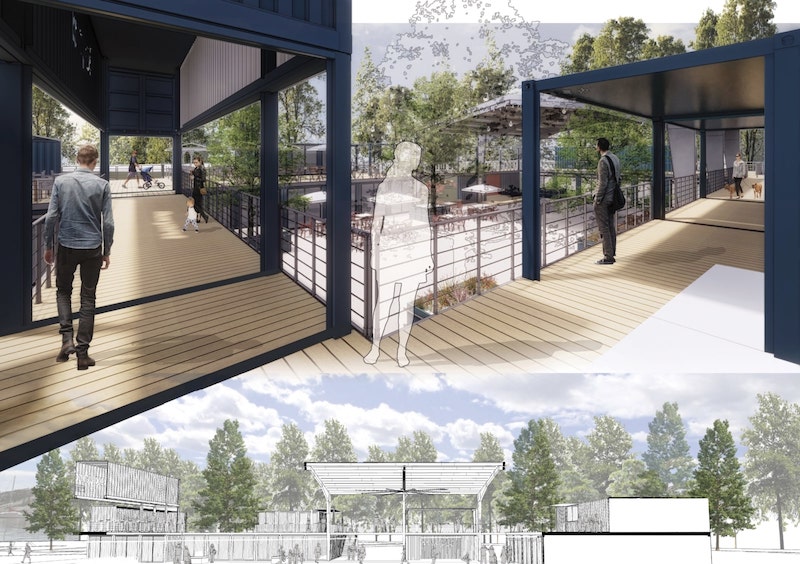
Boxyard RTP, made from 38 shipping containers, will serve as a community gathering and social space. Read the article.
• Experience over transaction: CallisonRTKL also worked with Fido, the cellphone provider, to create a new store concept whose redesign represents a deliberate shift from transactional to experiential retailing, and whose aesthetics encourage pressure-free conversations between staff and customers.
• Community outreach: Creative new construction in this sector includes Pienza Pizza Pasta and Porchette, a “social enterprise” restaurant within CetraRuddy’s new Corporate Commons Three mixed-use complex on Staten Island in New York. The design, says Ruddy, features a 40,000-sf organic rooftop farm that will supply the restaurant, and donate 100% of its profits to local charities.
Related Stories
Adaptive Reuse | Aug 31, 2023
Small town takes over big box
GBBN associate Claire Shafer, AIA, breaks down the firm's recreational adaptive reuse project for a small Indiana town.
Giants 400 | Aug 22, 2023
Top 115 Architecture Engineering Firms for 2023
Stantec, HDR, Page, HOK, and Arcadis North America top the rankings of the nation's largest architecture engineering (AE) firms for nonresidential building and multifamily housing work, as reported in Building Design+Construction's 2023 Giants 400 Report.
Giants 400 | Aug 22, 2023
2023 Giants 400 Report: Ranking the nation's largest architecture, engineering, and construction firms
A record 552 AEC firms submitted data for BD+C's 2023 Giants 400 Report. The final report includes 137 rankings across 25 building sectors and specialty categories.
Giants 400 | Aug 22, 2023
Top 175 Architecture Firms for 2023
Gensler, HKS, Perkins&Will, Corgan, and Perkins Eastman top the rankings of the nation's largest architecture firms for nonresidential building and multifamily housing work, as reported in Building Design+Construction's 2023 Giants 400 Report.
Shopping Centers | Aug 22, 2023
The mall of the future
There are three critical aspects of mall design that, through evolution, have proven to be instrumental in the staying power of a retail destination: parking, planning, and customer experience. This are crucial to the mall of the future.
Adaptive Reuse | Aug 17, 2023
How to design for adaptive reuse: Don’t reinvent the wheel
Gresham Smith demonstrates the opportunities of adaptive reuse, specifically reusing empty big-box retail and malls, many of which sit unused or underutilized across the country.
Sponsored | | Aug 15, 2023
The Data Benefits of Retail Keyless Entry
SALTO’s wireless access control system provides valuable data analytics for retail establishments
Office Buildings | Aug 10, 2023
Bjarke Ingels Group and Skanska to deliver 1550 on the Green, one of the most sustainable buildings in Texas
In downtown Houston, Skanska USA’s 1550 on the Green, a 28-story, 375,000-sf office tower, aims to be one of Texas’ most sustainable buildings. The $225 million project has deployed various sustainable building materials, such as less carbon-intensive cement, to target 60% reduced embodied carbon.
Market Data | Jul 24, 2023
Leading economists call for 2% increase in building construction spending in 2024
Following a 19.7% surge in spending for commercial, institutional, and industrial buildings in 2023, leading construction industry economists expect spending growth to come back to earth in 2024, according to the July 2023 AIA Consensus Construction Forecast Panel.
Standards | Jun 26, 2023
New Wi-Fi standard boosts indoor navigation, tracking accuracy in buildings
The recently released Wi-Fi standard, IEEE 802.11az enables more refined and accurate indoor location capabilities. As technology manufacturers incorporate the new standard in various devices, it will enable buildings, including malls, arenas, and stadiums, to provide new wayfinding and tracking features.


